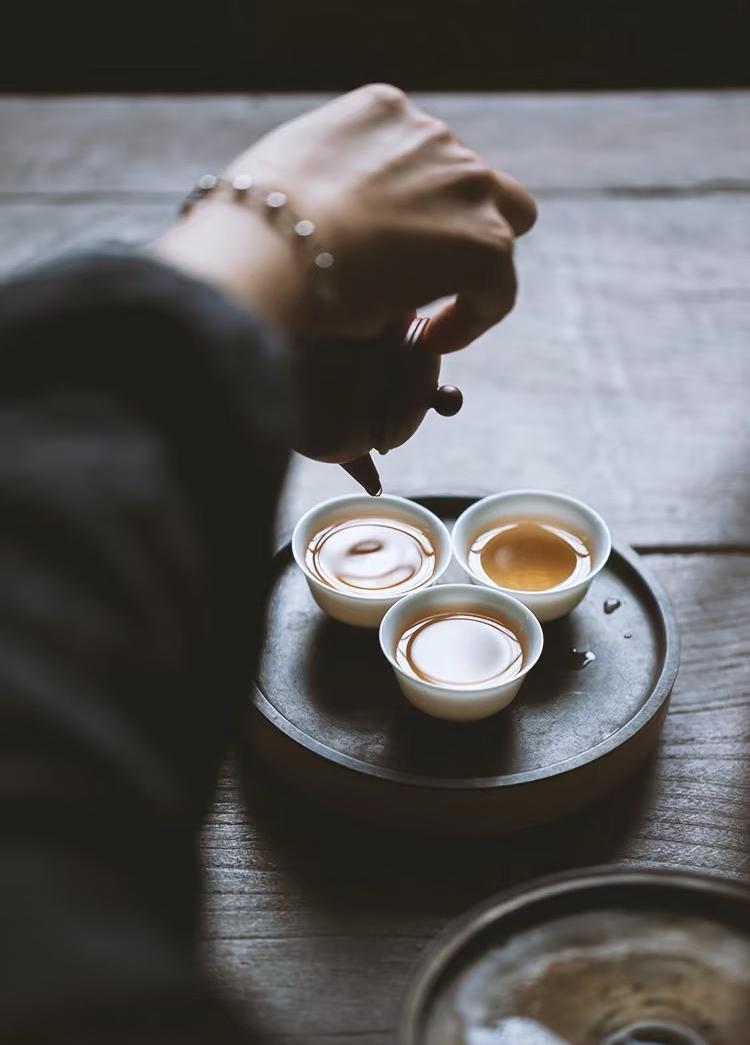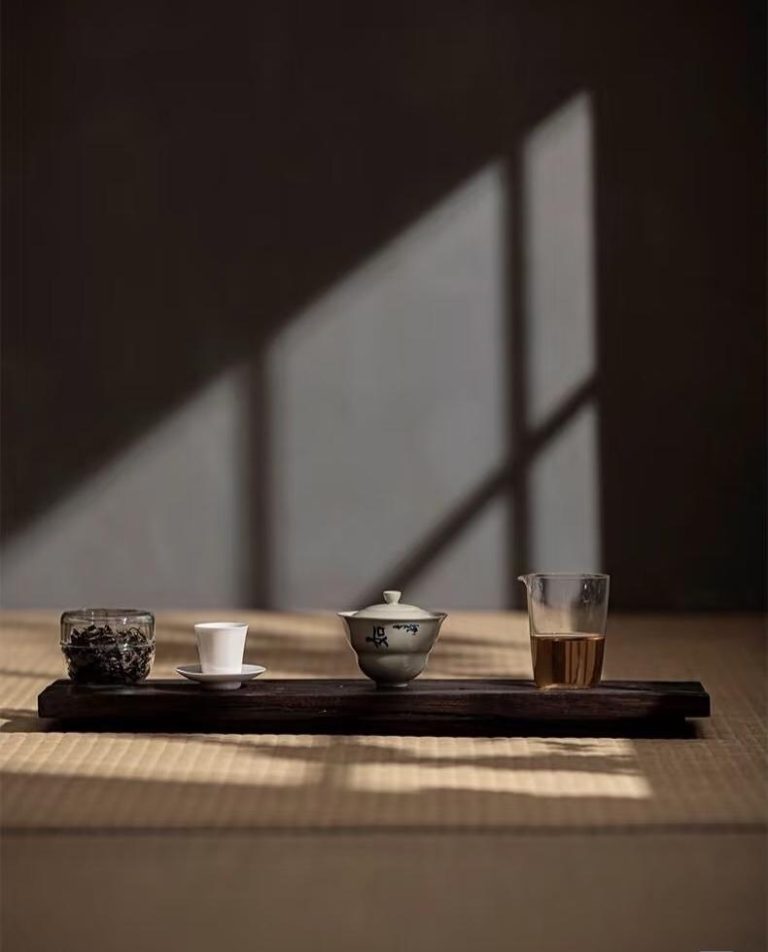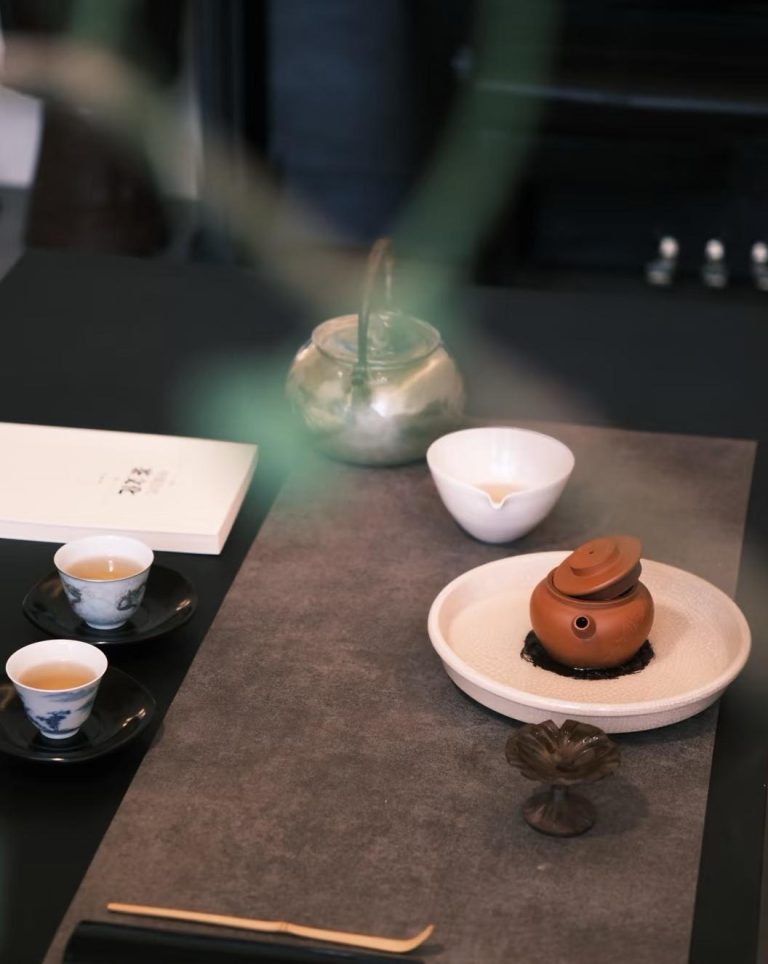
Welcome to the intriguing realm of Pu Erh Tea! This exceptional TEA variation, renowned for its deep-rooted history and intricate flavors, provides a pleasurable experience for every tea aficionado. Sipping on pu erh tea goes beyond enjoying a beverage; it entails immersing oneself in a tradition that spans centuries. Pu erh tea embarked on its path during the Tang dynasty, evolving to become a treasured consumable heirloom. While delving into pu erh tea, you will uncover its Benefits and its cultural importance in Chinese society. This guide is designed to enhance your knowledge of pu erh tea and its role in the expansive landscape of Chinese tea culture. Whether you are interested in Caramel pu erh or captivated by Cinnamon Pu Erh Tea, this guide will be your companion in navigating the intricate universe of pu erh tea.
Understanding Pu Erh Tea
Definition and Origin
What is Pu Erh Tea?
Pu erh tea stands out as a unique type of fermented tea. Originating from the lush landscapes of Yunnan Province in China, this tea has captured the hearts of many with its distinct flavor and rich history. When you take a sip of pu erh tea, you’re not just enjoying a drink; you’re experiencing a tradition that has evolved over centuries. Unlike other teas, pu-erh tea contains caffeine, which gives it a stimulating effect. This tea is often compressed into cakes or bricks, making it a fascinating addition to any tea collection.
Historical Background
The journey of pu erh tea began during the Tang Dynasty. Traders transported tea from Xishuangbanna to Tibet, and during these long journeys, the tea underwent natural aging and fermentation. This transformation gave birth to the unique characteristics of pu erh tea. Over time, the tea’s color and taste changed, creating a beverage that was both intriguing and delightful. The historical significance of pu-erh tea is immense, as it played a crucial role in trade and cultural exchanges between regions.
Types of Pu Erh Tea
Raw Pu Erh Tea
Raw pu erh tea, also known as “sheng”(生普洱茶) is the original form of this tea. It undergoes a natural fermentation process, which allows it to age gracefully over time. When you brew raw pu erh tea, you’ll notice its vibrant color and fresh, floral aroma. The taste can be slightly astringent, but it mellows with age, developing complex flavors that tea enthusiasts cherish. Raw pu erh tea is often compared to fine wine, as it improves with time and requires proper storage to reach its full potential.
Ripe Pu Erh Tea
Ripe pu erh tea, or “shou”(熟普洱茶), offers a different experience. This type of pu erh tea undergoes accelerated fermentation, resulting in a rich, earthy flavor. The deep reddish-brown color of ripe pu erh is visually striking, and its smooth taste makes it a favorite among those who prefer a more robust tea. Ripe pu erh is ready to drink soon after production, unlike raw pu erh, which benefits from aging. The unique fermentation process of ripe pu erh interacts with pu erh tea’s natural components, creating a beverage that is both soothing and invigorating.
When you explore the world of pu erh tea, you’ll discover a variety of options, each with its charm and allure. Whether you prefer the youthful vibrancy of raw pu erh or the mature depth of ripe pu erh, there’s a pu erh tea waiting to captivate your senses. As you delve deeper into this fascinating tea, you’ll find that pu erh tea contains caffeine, which adds to its appeal as a refreshing and energizing drink. The regular price of pu erh tea can vary, but its value lies in the unique experience it offers to those who appreciate its rich history and complex flavors.
Pu Erh Tea Production Process


Harvesting and Processing
Picking the Leaves
When it comes to crafting the perfect cup of Pu Erh Tea, the journey begins with a careful selection of tea leaves. You might wonder why this step is so crucial. Well, the quality of the leaves directly influences the final taste and aroma of the tea. Farmers handpick the leaves from the large-leaf varietal of Camellia Sinensis, ensuring only the finest are chosen. This meticulous process sets the stage for the unique character of pu erh tea.
Fermentation Process
Once the leaves are picked, they undergo a fascinating transformation. The fermentation process is what gives pu erh tea its distinctive flavor profile. During this stage, the leaves are exposed to specific conditions that encourage natural fermentation. This process mellows the astringent green grassy flavor of young pu-erh, evolving it into the smoother, fruitier flavor of aged teas. The fermentation not only enhances the taste but also interacts with Pu Erh Tea’s natural components, creating a beverage that’s both rich and complex.
Aging and Storage
Aging Techniques
Aging is where pu erh truly shines. Unlike many other teas, pu erh improves with time, much like a fine wine. The aging techniques allow the tea to develop deeper flavors and aromas. You might find it interesting that Pu Erh Tea can be aged for several years, with some enthusiasts even storing it for decades. This extended aging period contributes to the tea’s unique character, making each sip a delightful experience.
Proper Storage Methods
To ensure your Pu Erh Tea ages gracefully, proper storage is essential. You should store the tea in a cool, dry place, away from strong odors and direct sunlight. This helps preserve its quality and allows the flavors to mature over time. Many tea lovers use clay jars or wooden boxes for storage, as these materials provide the ideal environment for aging. By following these storage methods, you can enjoy the full benefits of Pu Erh, savoring its rich history and complex flavors with every cup.
Health Benefits of Pu Erh Tea
Exploring the world of Pu Erh Tea reveals not only its rich history and cultural significance but also its impressive health benefits. This unique TEA, with its distinct fermentation process, offers a variety of nutritional components and health effects that can enhance your well-being.
Nutritional Components
Antioxidants
Pu Erh Tea is packed with antioxidants, which play a crucial role in protecting your body from harmful free radicals. These antioxidants help reduce oxidative stress, potentially lowering the risk of chronic diseases. When you sip on Pu Erh, you’re not just enjoying a flavorful beverage; you’re also giving your body a boost of these beneficial compounds. The fermentation process that pu erh undergoes enhances its antioxidant content, making it a powerful ally in maintaining good health.
Caffeine Content
Like many teas, pu erh contains caffeine, which can provide a gentle energy boost. The caffeine content in pu erh tea varies depending on the type and brewing method. Whether you prefer the vibrant taste of raw pu erh tea or the earthy richness of ripe pu erh tea, you’ll find that the caffeine interacts with pu erh tea to offer a refreshing and invigorating experience. This makes pu erh an excellent choice for those looking to stay alert and focused throughout the day.
Health Effects
Weight Management
One of the notable benefits of pu erh tea is its potential role in weight management. Studies suggest that the unique fermentation process of pu erh tea may aid in fat breakdown and metabolism. By incorporating pu erh tea into your daily routine, you might find it easier to maintain a healthy weight. The tea’s natural components, combined with its low-calorie content, make it a smart choice for those looking to support their weight loss goals.
Digestive Health
Pu Erh Tea is also known for its positive effects on digestive health. The fermentation process produces beneficial bacteria that can improve gut health and aid digestion. Drinking pu erh tea regularly may help alleviate digestive issues and promote a healthy gut environment. The smooth, earthy flavor of ripe pu erh tea, in particular, can be soothing to the stomach, making it a comforting choice after meals.
Incorporating pu erh tea into your lifestyle offers a range of health benefits that go beyond its delightful taste. From its antioxidant-rich profile to its potential effects on weight management and digestion, Pu Erh Tea stands out as a valuable addition to your wellness routine. As you explore the diverse world of pu erh tea, you’ll discover how this remarkable tea can enhance both your health and your appreciation for the art of tea.
Cultural Significance
Role in Chinese Tea Culture
Traditional Tea Ceremonies
When you think about Pu Erh Tea, you might picture its deep connection to Chinese traditions. This unique tea has played a significant role in traditional tea ceremonies for centuries. During the Tang Dynasty, merchants began packing large tea leaves into compressed bricks, creating what we now know as pu erh tea. These bricks became highly sought-after, not just for their taste but also for their medicinal qualities. In these ceremonies, pu erh tea was more than just a drink; it was a symbol of hospitality and respect. The rich, earthy flavors of ripe pu erh tea and the vibrant notes of raw pu erh tea added depth to these cultural rituals.
Social and Cultural Importance
Pu Erh Tea holds a special place in Chinese society. It was once a luxury enjoyed by royalty and high officials. Over time, it became a staple in social gatherings and cultural exchanges. The price of pu erh tea often reflected its value in these settings. As you sip on this tea, you’re participating in a tradition that has brought people together for generations. The caffeine content in pu erh tea adds a refreshing touch, making it a perfect companion for lively conversations and celebrations.
Global Popularity
Export and International Markets
The allure of Pu Erh Tea extends beyond China. Its unique flavors and health benefits have captured the attention of tea enthusiasts worldwide. The export of pu erh has grown significantly, with international markets eager to experience its rich history and complex taste. As demand increased, especially from Chinese refugees in Hong Kong during the 1950s, tea makers in Yunnan realized the need to produce more pu erh tea. This expansion introduced the world to the wonders of both raw pu erh tea and ripe pu erh tea.
Influence on Western Tea Culture
In recent years, Pu Erh Tea has made its mark on Western tea culture. Its distinct fermentation process and aging techniques have intrigued many. The Effects of pu erh, such as aiding digestion and weight management, have contributed to its growing popularity. As you explore the world of pu erh, you’ll notice how it interacts with pu erh tea’s natural components to create a beverage that’s both soothing and invigorating. The influence of pu erh on Western tea culture highlights its versatility and timeless appeal.
How to Brew Pu Erh Tea


Brewing Pu Erh Tea can be a delightful experience. Whether you prefer the traditional methods or modern approaches, understanding the nuances of brewing will enhance your enjoyment of this unique tea. Let’s dive into the techniques and tips that will help you craft the perfect cup.
Brewing Techniques
Traditional Methods
Traditional brewing methods for pu erh tea often involve using a gaiwan or a small clay teapot. These tools allow you to fully appreciate the aroma and flavor of the tea. Start by rinsing the tea leaves with hot water to awaken their flavors. Then, steep the pu erh tea for a short time, usually around 20 to 30 seconds. This method lets you enjoy multiple infusions, each revealing different layers of taste. The caffeine content in pu erh provides a gentle energy boost, making it a perfect choice for a relaxing afternoon.
Modern Approaches
If you prefer a more convenient method, modern brewing techniques might suit you better. You can use a tea infuser or a French press to brew pu erh tea. Simply add the tea leaves to the infuser, pour hot water over them, and let them steep for a few minutes. This approach is ideal for those who want to enjoy pu erh without the need for specialized equipment. The price of pu erh tea can vary, but its rich flavors and health benefits make it a worthwhile investment.
Tips for the Perfect Cup
Water Temperature
Water temperature plays a crucial role in brewing Pu Erh Tea. For raw pu erh tea, use water that’s around 90-100°C. This temperature preserves the delicate flavors and prevents bitterness. For ripe pu erh tea, You can use the same 90-100°C water temperature, to bring out its earthy richness. Adjusting the water temperature helps you achieve the desired taste and aroma.
Steeping Time
The steeping time for Pu Erh Tea depends on your personal preference. For a lighter brew, steep the tea leaves for 1 to 2 minutes. If you prefer a stronger flavor, extend the steeping time to 3 to 5 minutes. Experimenting with different steeping times allows you to discover the perfect balance of taste and strength. Remember, the Effects of pu erh can vary based on how it interacts with Pu Erh Tea’s natural components during brewing.
By following these tips and techniques, you can enjoy a delightful cup of pu erh tea that suits your taste. Whether you choose traditional methods or modern approaches, the unique flavors and health benefits of pu erh will surely captivate your senses. So, go ahead and explore the world of pu erh tea, and let each sip transport you to the rich history and culture of this remarkable tea.
As you journey through the world of pu erh, you uncover its rich history and unique flavors. This TEA, with its distinct fermentation process, offers a delightful experience. From the vibrant notes of raw pu erh tea to the earthy richness of ripe pu erh tea, each sip tells a story. The caffeine content adds a refreshing touch, making it a perfect companion for any occasion. The price of Pu Erh Tea reflects its value, as it interacts with Pu Erh Tea’s natural components to create a beverage that’s both soothing and invigorating. Explore the Benefits and Effects of this remarkable TEA, and let it transport you to the heart of Chinese tea culture. Whether you’re drawn to the youthful vibrancy of raw pu erh or the mature depth of ripe pu erh, Pu Erh Tea invites you to savor its timeless appeal.











